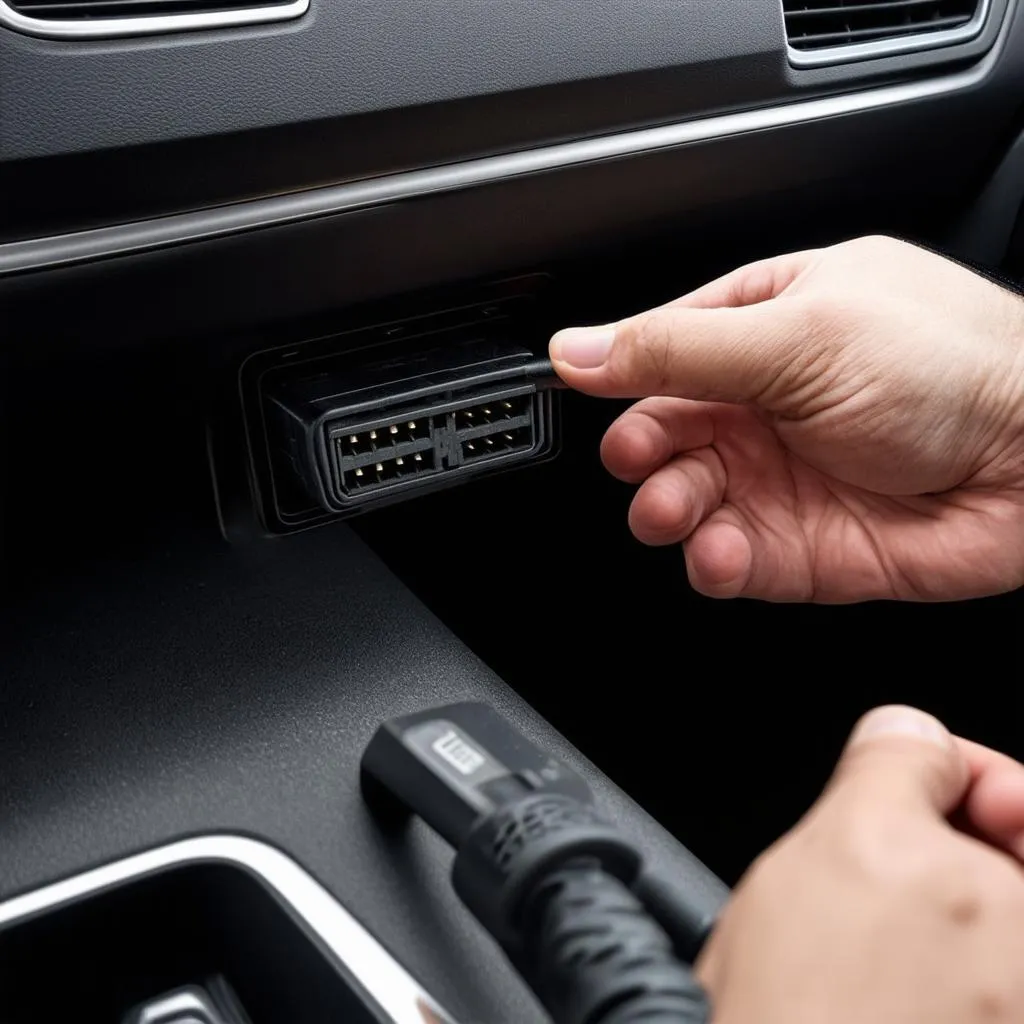VCDS DTCs are essential for diagnosing and resolving vehicle issues. This guide dives deep into understanding, interpreting, and clearing these codes, empowering car owners, mechanics, and technicians to effectively troubleshoot automotive problems.
What are VCDS DTCs and why are they important? A Diagnostic Trouble Code (DTC), when used with VCDS (Vag-Com Diagnostic System), is a fault code stored in your vehicle’s control modules. These codes pinpoint malfunctions within various systems, from the engine and transmission to airbags and ABS. Think of them as your car’s way of telling you something’s wrong. Understanding these codes is crucial for accurate diagnostics and efficient repairs.
Decoding the Secrets of VCDS DTCs
VCDS software provides a user-friendly interface to access and interpret these codes. Each code follows a standardized structure, providing valuable clues about the nature and location of the problem. A typical VCDS DTC might look like “P0301,” where “P” indicates a powertrain-related issue, “03” refers to a specific subsystem, and “01” pinpoints the exact problem within that subsystem. Having the ability to clear all dtcs vcds is a crucial step after addressing any issues.
Common VCDS DTCs and Their Meanings
Some DTCs appear more frequently than others. For example, P0420 often indicates a catalytic converter problem, while P0171 suggests a lean air/fuel mixture. Recognizing these common codes can save you valuable time and effort during the diagnostic process. Remember, understanding the context and accompanying symptoms is crucial for accurate diagnosis. Using the latest vcds ensures you have access to the most up-to-date information and features.
How to Use VCDS to Read and Clear DTCs
Connecting your VCDS interface to your vehicle’s OBD-II port allows you to access the stored DTCs. The software then displays these codes along with descriptions, aiding in pinpointing the root cause. Clearing DTCs after a repair is essential to verify the fix and prevent future misdiagnosis. Knowing how to vcds clear all dtc correctly is a vital skill for any technician.
Advanced VCDS DTC Analysis
Beyond simply reading and clearing codes, VCDS offers advanced features like measuring blocks and live data. These tools provide real-time insights into your vehicle’s sensor readings and component performance, allowing for in-depth analysis and precise diagnosis. Understanding these advanced features unlocks the full potential of VCDS. If you encounter issues with measuring blocks vcds not available, consult our troubleshooting guide.
Troubleshooting Common VCDS Issues
Occasionally, you might encounter challenges while using VCDS, such as communication errors or difficulty accessing specific modules. Familiarizing yourself with common troubleshooting steps, such as checking cable connections and ensuring proper software installation, can help you overcome these obstacles efficiently.
Why is understanding VCDS DTCs important?
Understanding VCDS DTCs empowers you to take control of your vehicle’s maintenance and repairs. It allows you to identify potential problems early on, saving you time and money on costly repairs down the line.
Can I clear DTCs without fixing the underlying problem?
While you can clear DTCs without fixing the issue, this is not recommended. The codes will likely reappear if the underlying problem persists. Clearing codes should be done after a repair to confirm the fix.
What if my VCDS doesn’t recognize my vehicle?
Ensure you have the correct VCDS version and compatible cable for your vehicle. Consult the VCDS compatibility charts and update your software if necessary.
Conclusion
Mastering VCDS DTCs is a crucial skill for anyone working on modern vehicles. It allows for precise diagnostics, efficient repairs, and a deeper understanding of your car’s inner workings. By utilizing the information and resources provided in this guide, you can effectively leverage VCDS to keep your vehicle running smoothly. Remember to always refer to your vehicle’s specific repair manual for detailed instructions and safety precautions.
FAQs
- What does VCDS stand for? VCDS stands for Vag-Com Diagnostic System.
- Is VCDS compatible with all car makes and models? No, VCDS is primarily designed for vehicles within the Volkswagen Auto Group (VAG).
- Can I use VCDS to code new features in my car? Yes, VCDS allows for coding and customization of certain vehicle features.
- Do I need any special training to use VCDS? While basic operation is relatively straightforward, some advanced features require more in-depth knowledge.
- Where can I purchase a genuine VCDS cable? Genuine VCDS cables can be purchased from authorized distributors.
- Can I damage my car by using VCDS incorrectly? While unlikely, improper use of certain functions could potentially lead to issues. Always follow instructions carefully.
- What is the difference between generic OBD-II scanners and VCDS? VCDS offers more in-depth functionality and access to VAG-specific systems compared to generic OBD-II scanners.
Need expert assistance? Contact us via Whatsapp: +1 (641) 206-8880, Email: CARDIAGTECH[email protected] or visit us at 276 Reock St, City of Orange, NJ 07050, United States. We offer 24/7 customer support.

